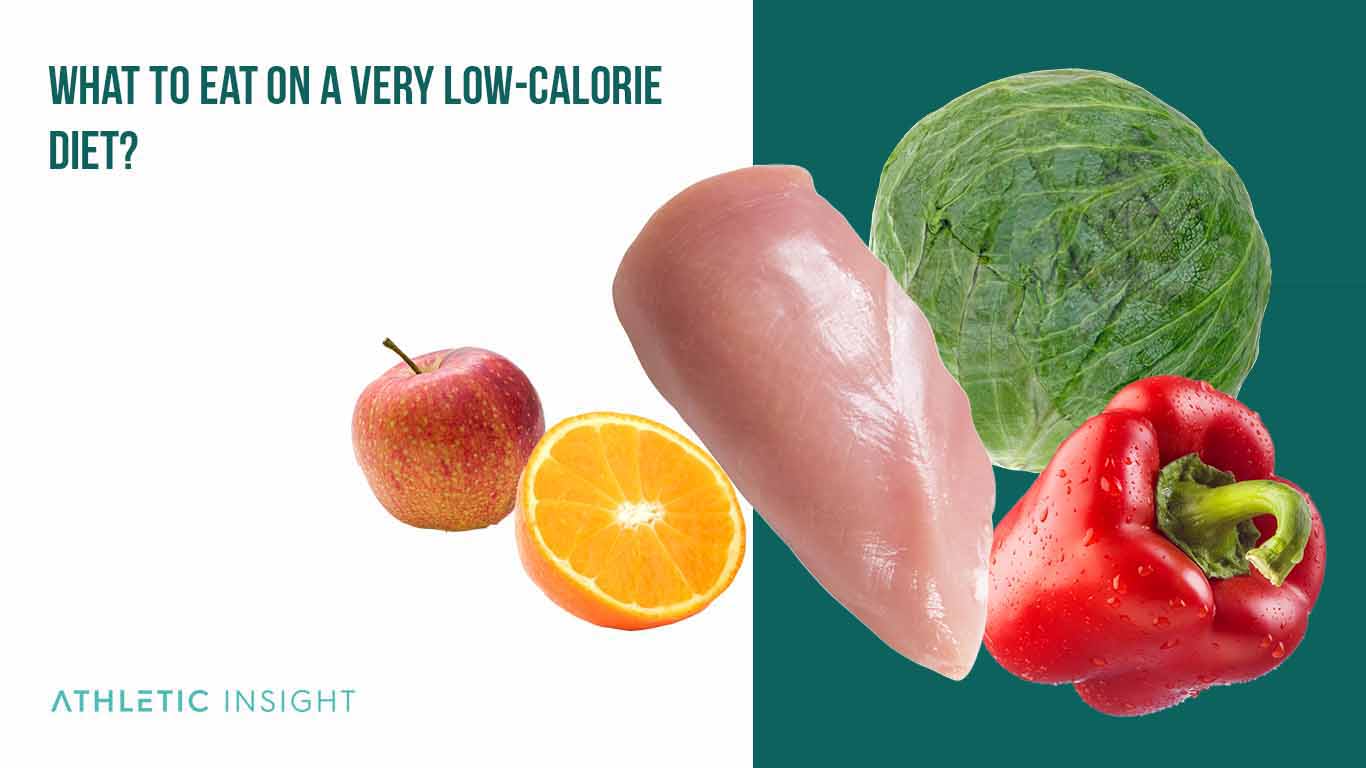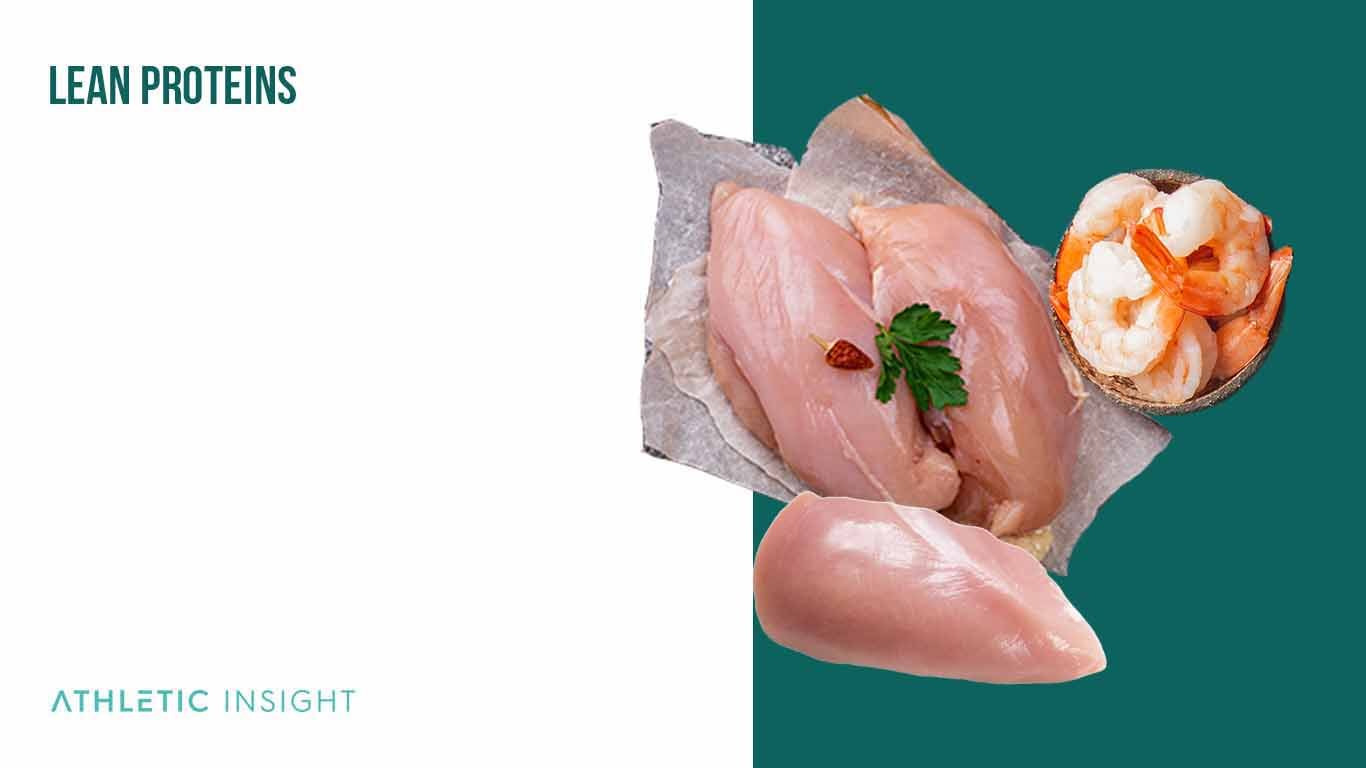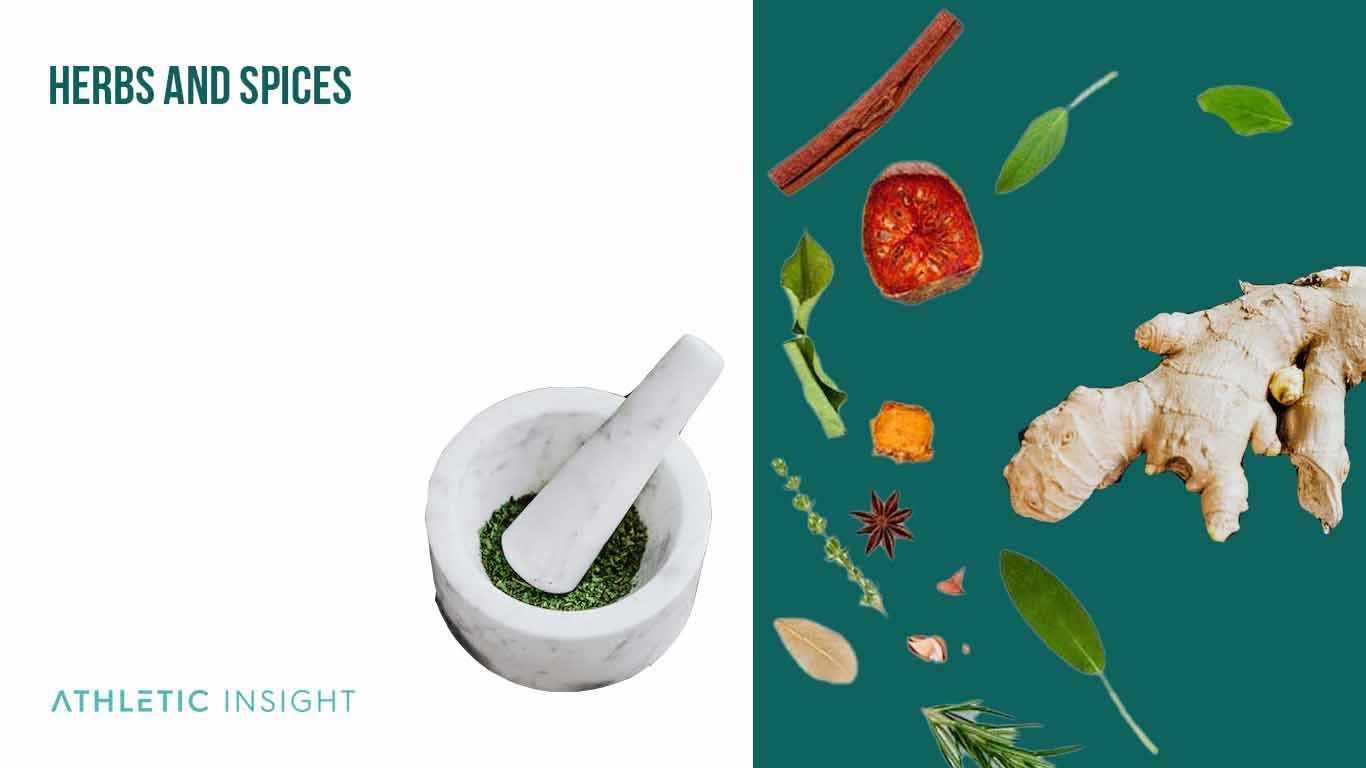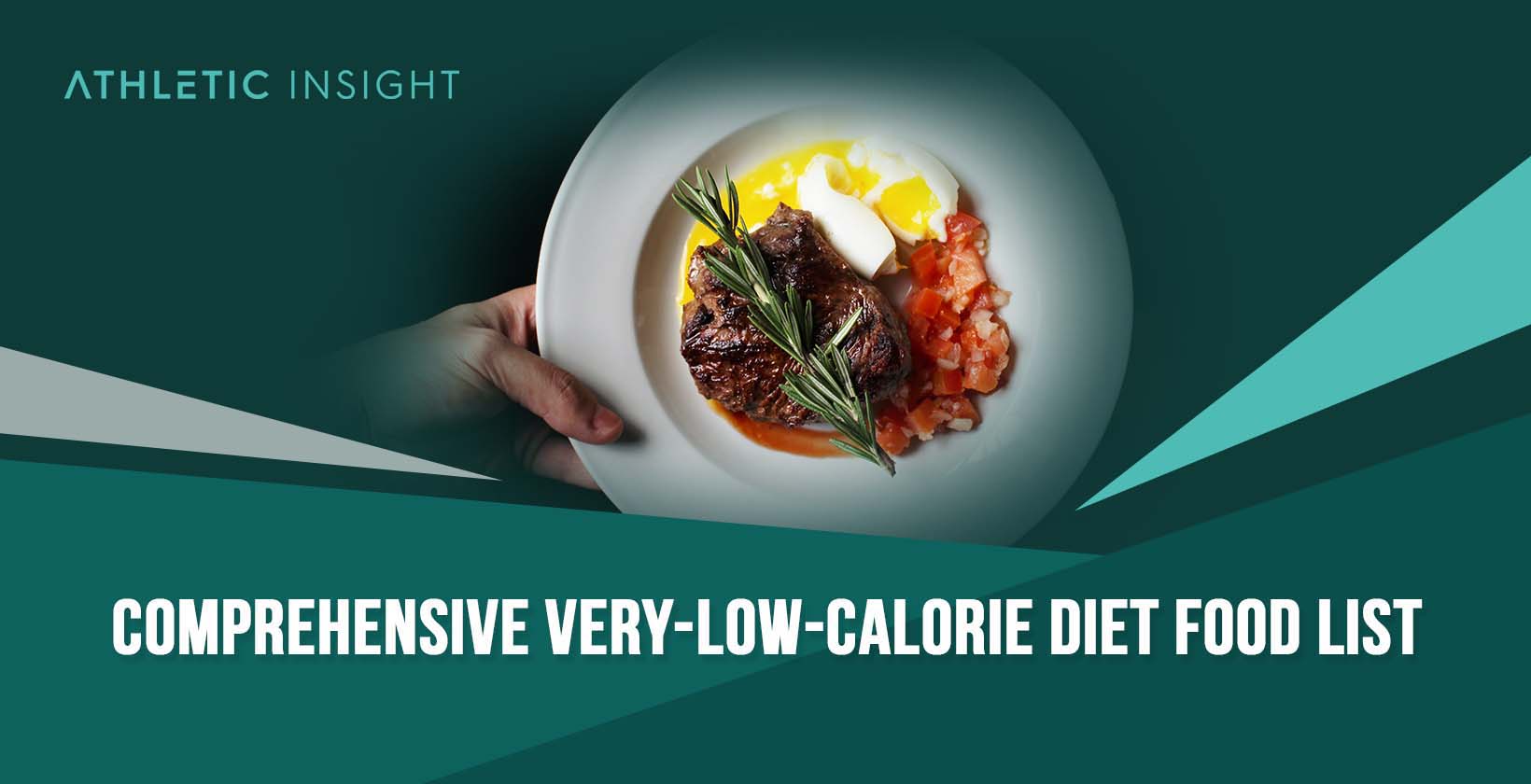To eat a very low-calorie diet, you want to find low-calorie foods that are satisfying and healthy. Before you choose the lowest-calorie foods, check to see how much water and fiber they contain, as it is a good indicator as to whether or not you should consume it. The reason for this is that water and fiber help you feel full without adding many calories to your diet.
What To Eat on a Very Low-Calorie Diet?
For people wanting to eat low-calorie meals, there’s no need to restrict yourself to bland foods. Some examples of low calorie foods are fruits, vegetables, lean protein, whole grains, herbs and spices. These low-calorie foods ensure you feel full and still taste plenty of flavors.

- Fruits: Fruits are low-calorie foods that give you vitamins, antioxidants, and just enough natural sugar to provide energy. Blueberries, strawberries, and blackberries are some of the best fruits you can eat on a low-calorie diet.
- Vegetables: Vegetables have many vitamins and minerals but few calories. Potatoes have one of the highest calorie counts for vegetables, but when you consider how filling they are, they can balance out your calorie intake for the day.
- Lean Proteins: Lean proteins like fish, chicken, and turkey help you feel full without inflating your calorie count. If you don’t get enough protein each day, you’re more likely to snack, so meeting a base level by eating lean meats will keep your calorie count down overall.
- Low Dairy: Low or no-fat dairy products are some of the lowest-calorie foods. Greek yogurt is one of the best items to eat when you’re on a low-calorie diet, along with cottage cheese. If you need milk as a beverage or an ingredient, using skim milk keeps your calorie count low.
- Whole Grains: Whole grains like oats, wild rice, and quinoa are healthy and low in calories. You can pair them with other low-calorie foods to make a complete meal, like adding berries to oatmeal or eating fish with rice.
- Herbs and Spices: Herbs and spices add flavor to any dish without adding calories. Some herbs have other health benefits as well, such as vitamins and antioxidants.
1. Fruits
Fruits are zero-calorie foods that work well as a snack or part of a meal. Some of the best fruits to eat on a low-calorie diet include berries, watermelon, cantaloupe, grapefruit, and apples.
These fruits contain fiber, vitamins, and antioxidants. Many have additional health benefits like protection against heart disease.
For a low-calorie diet, you should eat two cups of fruit a day. You can mix and match the types of fruit you eat and add them to oatmeal or other low-calorie foods to make a complete meal.
The specific amount of protein and calories for fruit vary according to the type. Strawberries, for example, contain one gram of protein and 46 calories per cup. Cantaloupe offers 1.5 grams of protein and 60 calories per cup.
Fruit doesn’t contain much healthy fat, but with the natural water that it contains, you’ll still feel full after eating it. One cup of watermelon has just 0.2 grams of fat, and grapefruit has 0.3 grams.
2. Vegetables
Vegetables are zero-calorie foods that add flavor and texture to many dishes. They’re also great raw as a snack. Some of the best vegetables to eat on a low-calorie diet include cucumbers, celery, kale, spinach, radishes, mushrooms, and bell peppers.
Since vegetables are so low-calorie, you can eat five servings a day.
You get various amounts of protein and fat from different vegetables. One cup of spinach has 5.35 grams of protein, 0.47 grams of fat, and only seven calories. A serving of mushrooms has 0.6 grams of protein, 0.1 grams of fat, and four calories.
Cucumbers have high water content and make you feel full. They’re great to eat raw because they give you just 16 calories, 0.6 grams of protein, and only 0.1 grams of fat.
Vegetables are good for low-calorie diets because they fill you up. Depending on how you cook them, they can take longer to chew, which gives your body time to naturally feel full. They contain vitamins, minerals, and fiber to keep you healthy.
3. Lean Proteins
Lean proteins like chicken, turkey, and pork are filling and provide a lot of protein. You can even eat steak as long as you cut off the fat. You can eat many lean cuts of meat as long as you don’t bread or fry them.

Cook them plain or add a sprinkling of herbs and spices for the flavor to keep the calorie count low for zero-calorie snacks.
Cod and halibut are lean fish with lots of protein. While salmon and mackerel have higher calories, they provide omega-3 fatty acids that have a great impact on your health. You can eat those types of fish in moderation for your health without adding too many calories to your diet.
Pork has 12 grams of fat and 23 grams of protein. If you’re eating a lean cut of pork tenderloin, you’ll get just 122 calories from a filling meal. Chicken has 165 calories but boasts 31 grams of protein and only 3.6 grams of fat.
Halibut has 115 calories, 2 grams of fat, and 42 grams of protein. As previously mentioned, salmon has a higher calorie count at 412. However, it has 40 grams of protein and 27 grams of healthy fat, along with omega-3s.
Lean protein is good for low-calorie diets because it helps you feel full and keep you healthy. Even though you’re eating fewer calories, protein helps build muscle, so you can still get stronger on this diet.
4. Low or No-Fat Dairy Products
Low or no-fat dairy products provide protein and help you feel full without adding a lot of calories to your daily intake. Dairy products have a wide variety of calories due to the fat content, so limiting your diet to low or no-fat options ensures you’ll stick to the right plan.
Some low or no-fat dairy products you can eat are skim milk, plain nonfat yogurt, and low-fat cottage cheese. Plain nonfat yogurt has 12 grams of protein, 0.4 grams of fat, and 107 calories in one cup.
Cottage cheese provides a lot of protein without adding calories to your diet. Eating a serving of cottage cheese with low-calorie vegetables can curb your hunger. A cup has 183 calories, 5 grams of healthy fat, and 25 grams of protein.
Low and no-fat dairy products are good for low-calorie diets because you’ll get plenty of protein and nutrients per serving. Eating cottage cheese or yogurt as a snack helps you feel full.
5. Whole Grains
Whole grains are a low-calorie food that can help round out any meal. They are grains that haven’t been processed, so they’re healthiest for you. They have a lot of fiber and keep you feeling full for a long time after you eat.
Low-calorie whole grains include oats, wild rice, quinoa, and even popcorn. Yes, if you don’t smother your popcorn in butter, sugar, or processed cheese toppings, you can enjoy it as a low-calorie, whole-grain snack.
You’ll probably find whole grains like oats, wild rice, and quinoa more filling, though. One cup of oats has 154 calories, 26 grams of protein, and 10 grams of fat. Wild rice has 170 calories, 24 grams of protein, and 1.7 grams of fat per serving.
Quinoa has 8 grams of protein and 2 grams of fat. It has 222 calories per serving, making it the highest-calorie whole grain on the list. But just as salmon has high calories but is still a healthy choice, the same is true of quinoa. It’s a good food to eat in moderation.
Whole grains are good to include in a low-calorie diet because they’re high in fiber and make you feel full. Since they’re not processed, they’re easy to digest and keep your body systems running smoothly.
6. Herbs and Spices
Herbs and spices are low-calorie foods that add lots of flavors to other items on this list.
Some of the best low-calorie herbs and spices include cinnamon, basil, cayenne pepper, ginger, and garlic. Many of these herbs are also healthy in other ways, like introducing more antioxidants and nutrients into your diet.

Cinnamon fights inflammation and lowers your blood sugar. You can add anywhere from one to six grams to your meals throughout the day and only take in 19 extra calories.
Basil boosts your immune system and can also lower blood sugar levels. You can add 6 to 12 grams of basil to your meals to get a burst of flavor while adding just one calorie.
Cayenne pepper can naturally suppress your appetite while burning more fat in the process. It has just 17 calories per tablespoon, so you can use it in many meals to add flavor.
Ginger has just 9 calories per tablespoon and adds a lot of taste to your dishes. If you’re ever feeling nauseous, ginger can help you feel better. It also helps with pain management and inflammation.
Garlic has a lot of flavor with only four calories. It’s a good herb to maintain heart health and reduce blood pressure.
All herbs on this list contain less than one gram of fat per tablespoon if they have any at all. Add herbs and spices to other foods on this list to create tasty zero-calorie snacks.
What Can’t You Eat on a Very Low-Calorie Diet?
It makes sense that you only want to eat low-calorie foods on this diet. But what are some things you shouldn’t eat?
- Refined carbohydrates (in excess)
- High-fat foods (in excess)
- Sweetened beverages
Read on to find out why you need to avoid these items on a low-calorie diet, as well as how to make an ideal diet plan.
How to Create a Very Low-Calorie Diet Plan
When you create a very low-calorie diet plan, you should have a goal of losing one or two pounds a week while also adding daily physical activity. These steps, along with the guidelines listed below, will help you stay healthy while decreasing your calories.
1. Refined Carbohydrates (In Excess)
Refined carbohydrates include table sugar, high fructose corn syrup, and white flour. These foods have no vitamins or fiber, so you’re only getting calories from them. You won’t find these ingredients on the 0-calorie foods list.
2. High-Fat Foods (In Excess)
High-fat foods include avocados, cheese, nuts, and extra virgin olive oil. They have health benefits if you eat them in moderation, but it’s better to choose low-calorie fruits and veggies.
3. Sweetened Beverages
Sweetened beverages have high-calorie counts but give you no nutritional value. They’re drinks that don’t fill you up, so you’re likely to drink more of them.
The sugar you take in can cause you to gain weight and also makes your blood sugar rise. Instead of drinking sweetened beverages, drink water and eat items from the zero-calorie foods list.
How Many Calories Can You Eat While on a Very Low-Calorie Diet?
The definition of a low-calorie diet refers to 800 to 1,500 calories a day. While the goal is weight loss, you need to remain healthy while you’re decreasing your calories so much. Some people, like athletes or breastfeeding mothers, shouldn’t decrease their calories because they burn them naturally.
Eating low-calorie meals will help your body adjust to getting fewer calories per meal, which helps you adjust to getting less each day. There is also a 1200 calories a day diet that many recommend.
What Percentage of Daily Fat-Intake Do You Need Doing a Very Low-Calorie Diet?
People need 20% to 35% of daily fat intake to maintain their health but still lose weight. For a 1,000-calorie diet, it means you need anywhere from 22 to 39 grams of fat each day.
Trying to eat less than that can negatively impact your overall health. Eating zero-calorie foods will help you keep your calorie count low while still getting the necessary fat.
What Percentage of Daily Protein Do You Need Doing a Very Low-Calorie Diet?
Adults need to get at least 10% to 35% of their daily calories from protein. If your goal on the low-calorie diet is to lose weight, eating more protein will help. Eating foods with zero calories can keep your count down while you take in more protein and healthy fat.
Is Gluten-Free Diet Food List Expensive?
Gluten-free diet food is more expensive than traditional food, often costing twice as much. But gluten-free foods are more affordable than they used to be because they’re more popular than before. You can get a list of low-calorie foods and see what you need to buy that’s gluten-free.
What Are the Sample Very Low-Calorie Menu for One Week?
Low-calorie diets call for 1,000 to 1,500 calories a day. A sample weekly meal plan can help you realize what zero-calorie food you need to eat.
Day 1
Breakfast: Shredded wheat with skim milk and berries
Lunch: Roast beef sandwich on whole wheat bread and an apple
Dinner: Halibut and wild rice
Day 2
Breakfast: Oatmeal and watermelon
Lunch: A veggie sandwich with hummus
Dinner: Chicken and green beans
Day 3
Breakfast: Greek yogurt and a clementine
Lunch: Veggie burger and carrots
Dinner: Pork tenderloin and zucchini
Day 4
Breakfast: An apple and peanut butter
Lunch: Baked potato with garlic and basil
Dinner: Lean steak with kale
Day 5
Breakfast: An egg and cantaloupe
Lunch: Spinach salad
Dinner: Salmon with quinoa
Day 6
Breakfast: Greek yogurt with blueberries
Lunch: Cod with an apple
Dinner: Chicken with spinach
Day 7
Breakfast: Oatmeal with strawberries
Lunch: Taco bowl with lean meat
Dinner: Pork tenderloin with wild rice
Are There Medications to Avoid While on This Very Low-Calorie Diet?
No, there’s no need to avoid medications when you’re eating low-calorie food. You can check with your doctor if you’re unsure.
Are Very Low-Calorie Diets Safe?
Yes, a low-calorie diet is safe when done correctly. Eating low calories can help you lose weight, but you must manage your diet carefully. You usually need medical assistance to maintain your health on this diet.
Do Doctors Recommend Very Low-Calorie Diet?
Doctors might recommend a low-calorie diet for anyone with a BMI greater than 30. They’ll supervise you on a diet to ensure it’s not detrimental to your health.
Some medical conditions call for the patient to lose weight before taking action. The doctor will recommend a low-calorie diet to help the patient lose weight before surgery.
Doctors can also recommend low-calorie diets to help people manage diabetes. Eating zero-calorie foods can help them lose weight easily.



